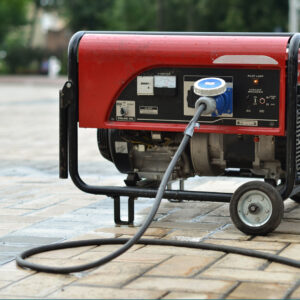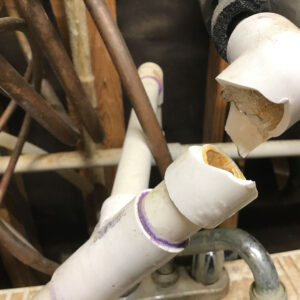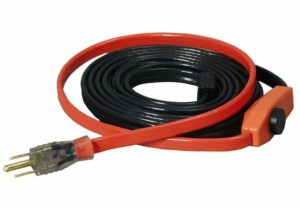3 Ways To Protect Your Home From A Winter Storm
Snowstorm versus Blizzard: What’s the difference?
 The difference between a snowstorm and a blizzard is the conditions.
The difference between a snowstorm and a blizzard is the conditions.
A blizzard is a severe winter storm with winds blowing over 35 miles per hour for over 3 hours. Visibility reduces significantly, making travel conditions severe and treacherous.
Blizzard conditions can happen quickly when fallen snow blows around forcefully, creating snowdrifts, power outages, and the build-up of heavy snow on tree branches.
Hazardous conditions such as these create problems for homeowners, but you can do a few things to minimize damage to your home and maximize safety.
Here are 3 ways to protect your home (and family) from a winter storm:
Check the Outside Vents
Keep the outside vent clear from ice, snow, and debris. Blocked pipes outside the home can cause poisonous carbon monoxide gas to back up inside your home.
Depending on the type of heating system in your home, built-in safety switches will turn off the system automatically, leaving your home without heat.
The HVAC system will need a reset to regain heat but check for proper ventilation.
Run a Gas-Powered Generator Outside During a Power Outage
 Power outages are inevitable during a winter storm, so hopefully, you have a generator as a backup. Generators are essential to restoring power in a home after an outage; however, they can harm human health if misused.
Power outages are inevitable during a winter storm, so hopefully, you have a generator as a backup. Generators are essential to restoring power in a home after an outage; however, they can harm human health if misused.
One of the biggest killers after a winter storm is carbon monoxide poisoning. Carbon monoxide is a colorless, odorless gas emitted when fossil fuels burn.
Don’t take any chances when you rely on an improvised heating source.
Here are some Dos and Don’ts when using a gas-powered generator:
DO:
- Run the generator outside at least 20 feet away from your home and open windows
- Follow the instructions
- Keep the generator dry
- Use a carbon monoxide alarm in each room of your home
DON’T:
- Operate the generator inside your home, garage, or carport
- Operate a generator near an open window
Protect the Pipes In Your Home
 The water in your home’s pipes can freeze during a winter storm. Heat tape (insulation tape) is an inexpensive option to use to prevent your pipes from bursting.
The water in your home’s pipes can freeze during a winter storm. Heat tape (insulation tape) is an inexpensive option to use to prevent your pipes from bursting.
Heat tape is not really “adhesive tape” at all. It is an electrical cable that wraps around (or snakes through) pipes while releasing a controlled amount of heat.
 Installing the cable is relatively easy for a homeowner; however, read the directions VERY carefully. Also, ensure it is certified and meets the standards of Underwriters Laboratories (UL).
Installing the cable is relatively easy for a homeowner; however, read the directions VERY carefully. Also, ensure it is certified and meets the standards of Underwriters Laboratories (UL).
Improper installation is the leading cause of fires and melted insulation. For example, sparks may fly if heat tape is wrapped too tightly or overlaps, so be mindful when attempting this DIY project.
A caveat about heat tape is that it needs to be installed before temperatures plummet. Insulated tape may be an option to keep in mind for future storms, no matter where you live.
If you’re uncomfortable installing insulation tape, there is another way to prevent your pipes from freezing. Simply let a tiny amount of warm water trickle overnight or throughout the day.
Safety is the goal during a winter storm.
Visit the Centers for Disease Control and Prevention for more information on keeping your home safe from a winter storm, or visit AMD Environmental’s blog page to learn more about avoiding winter weather damage.

